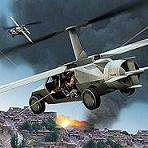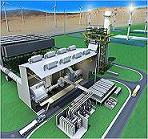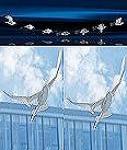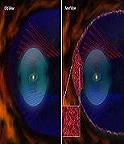- GD&T
GENERAL DIMENSIONING- International Paper Size Standards
- Technical Drawing Styles
- ISO And ANSI Projections
- ANSI Technical Drawing Views
- Technical Drawing Dimesioning Types
- ANSI and ISO Geometric Tolerancing Symbols
- Geometric Tolerancing Reading
- Taylor Principle Rule#1
- Form Tolerances
- Profile Tolerances
- Orientation Tolerances
- Location Tolerances
- Runout Tolerances
- TOLERANCES
ANSI AND ISO- Tolerancing and Engineering Standards
- Hole and Shaft Basis Limits And Fits
- ISO International System For Limits And Fits
- International Tolerance Grade (IT)
- Fundamental Deviations For Hole and Shaft Basis
- ISO Tolerance Band IT01-IT16
- Calculation Of International Tolerance
- Calculation of Upper and Lower Deviation For Shaft
- Calculation of Upper and Lower Deviation For Holes
- ISO Shaft Tolerances (3mm-400mm)
- ISO Shaft Tolerances (400mm-3150mm)
- ISO Hole Tolerances (3mm-400mm)
- ISO Hole Tolerances (400mm-3150mm)
- ANSI Standard Limits and Fits
- METAL CUTTING TECHNOLOGIES
- Terms and Definitions of the Cutting Tools
- Cutting Tool Materials
- Selection of Carbide to machine the work-part
- Identification System For Indexable Inserts
- Work-Part Materials
- Machinability and the specific cutting force
- Machinability of the Certain Material Evaluations
- Cutting Forces and Chip Formations
Shrink Fit: Shrink fit (transverse press) is the non-forcible inserting of the part after previous hole heating or after shaft cooling. In case of shrink fit, the effective interference also decreases to a certain level due to "subsidence". The decrease, however, is significantly smaller than in the case of force fit. The value of subsidence depends on the roughness of the connected areas. The loading capacity of shrink fit coupling is approximately 1.5 times higher than in the case of force fits. The selection of heating or cooling depends on dimensions of the parts and technical possibilities. During the hole heating, it is necessary to observe that the temperature when structural changes in material occur (in case of steel, it is approximately 200°C/395°F to 400°C/750°F) is not exceeded. Heating of outer parts is usually done in a oil bath (up to 150°C/300°F) or gas or an electric furnace. Parts with small diameters have to be heated to a much higher temperature than ones. Cooling of shafts is usually done rather with smaller couplings, using carbon dioxide (-70°C/-95°F) or condensed air (-190°C/-310°F). For couplings with large assembly interferences, a combination of both methods may be used. Shrink fitting is unsuitable for parts made of heat-treated steel and in case of a heated part fitted on a hardened one. In such case, it is necessary to cool the inner part or force fit the coupling.
Preferred Renard Numbers For American National Standard (ANSI Z17.1-1973, ISO 3-1973)
Preferred Numbers are a serious of selected numbers for use to standardize purposes in preferences in any other numbers. These numbers are created by Charles Renard. These system was adopted as ISO 3-1973, ANSI Z17.1-1973 and British Standard BS2045:1965. He discovered that 425 different sizes of cable were being used to moor the balloons, a logistical nightmare, and set about determining how best to reduce these to a smaller number of sizes. After He determined that the relevant characteristic of the cable was its mass per unit length ( Such as diameter, Lengths, volume, areas etc.) Renard succeeded in replacing the 425 sizes with 17 sizes that covered the same range. These preferred numbers of serious also would help ratings of machinery and apparatus in kilowatts, horsepower, voltages, etc. These number can be used in Metric, inch or any other customary units.
The Renard Numbers are five geometric sequence. A geometric sequence takes this form:
For Rn, Hence: 10b/n,10b/n, 10b/n, 10b/n,10b/n
where "a" is the scale factor and n ≠ 0 is the common ratio, where "b" is an integer in the serious 0,1,2,3, etc. Renard Preferred Numbers are called the R5, R10, R20, R40 and R80 series.
Renard Series Numbers, Rn, where a = 1 and r = ax10b/n. For each series, values are calculated from 1 to 10, and then rounded. As an example, If n=5, and a=1 ( to round the number "a" can be taken 10) so Rn can be calculated as followed;
For R5, Hence: 100/5 = 1, 101/5 = 1.584... ~ 1.6, 102/5 = 2.511... ~ 2.5, 103/5 = 3.981... ~ 4.0, 104/5 = 6.309... ~ 6.3, 105/5 = 10
Renard Series Number shown in the chart below( for R5, R10, R20, R40 and R80);
| Renard Series Designation | Prefered Numbers | |||||||||
| R5: | 1.00 | 1.60 | 2.50 | 4.00 | 6.30 | |||||
| R10: | 1.00 | 1.25 | 1.60 | 2.00 | 2.50 | 3.15 | 4.00 | 5.00 | 6.30 | 8.00 |
| R20: | 1.00 | 1.25 | 1.60 | 2.00 | 2.50 | 3.15 | 4.00 | 5.00 | 6.30 | 8.00 |
| 1.12 | 1.40 | 1.80 | 2.24 | 2.80 | 3.55 | 4.50 | 5.60 | 7.10 | 9.00 | |
| R40: | 1.00 | 1.25 | 1.60 | 2.00 | 2.50 | 3.15 | 4.0 | 05.00 | 6.30 | 8.00 |
| 1.06 | 1.32 | 1.70 | 2.12 | 2.65 | 3.35 | 4.25 | 5.30 | 6.70 | 8.50 | |
| 1.12 | 1.40 | 1.80 | 2.24 | 2.80 | 3.55 | 4.50 | 5.60 | 7.10 | 9.00 | |
| 1.18 | 1.50 | 1.90 | 2.36 | 3.00 | 3.75 | 4.75 | 6.00 | 7.50 | 9.50 | |
| R80: | 1.00 | 1.25 | 1.60 | 2.00 | 2.50 | 3.15 | 4.00 | 5.00 | 6.30 | 8.00 |
| 1.03 | 1.28 | 1.65 | 2.06 | 2.58 | 3.25 | 4.12 | 5.15 | 6.50 | 8.25 | |
| 1.06 | 1.32 | 1.70 | 2.12 | 2.65 | 3.35 | 4.25 | 5.30 | 6.70 | 8.50 | |
| 1.09 | 1.36 | 1.75 | 2.18 | 2.72 | 3.45 | 4.37 | 5.45 | 6.90 | 8.75 | |
| 1.12 | 1.40 | 1.80 | 2.24 | 2.80 | 3.55 | 4.50 | 5.60 | 7.10 | 9.00 | |
| 1.15 | 1.45 | 1.85 | 2.30 | 2.90 | 3.65 | 4.62 | 5.80 | 7.30 | 9.25 | |
| 1.18 | 1.50 | 1.90 | 2.36 | 3.00 | 3.75 | 4.75 | 6.00 | 7.50 | 9.50 | |
| 1.22 | 1.55 | 1.95 | 2.43 | 3.07 | 3.87 | 4.87 | 6.15 | 7.75 | 9.75 | |
Some rounded values are desirable to use in some application, it depends on how high
accurate or less accurate numbers wanted. For less accurate number, it can be chosen by using
one prime ( R' ) or two prime ( R" ) of the Renard numbers. For example;
R10': 1.0 , 1.3 , 1.6 , 2.0 , 2.5 , 3.2
R10": 1 , 1.2 , 1.5 , 2 , 2.5 , 3
ANSI Preferred Metric Sizes B4.2-1978, ANSI B32.4-1974
ANSI preferred basic sizes of mating parts should be selected from the first choice sizes as shown in the chart below. These sizes shown in the chart below have been selected from the preferred round diameters of the metal products in ANSI B32.4-1974 Round, Square and Hexagonal Metal Products for Preferred Metric Sizes. The first choice sizes given in the chart below follow approximately the R10 preferred series of numbers where succeeding numbers in the series increments of 25%.The Second choice preferred number series shown in chart below selected from R20. These preferred number series may be converted to sizes in several ways. Often they are multiplied or divided by some multiple of ten (e.g.,1.0, 1.6, 2.5, 4.0, 6.3, 10; 1000, 1600, 2500, 4000, 6300, 10000.). In the chart below the preferred numbers have multiplied by 1000.
| BASIC SIZE (mm) | BASIC SIZE (mm) | BASIC SIZE (mm) | |||
| 1st Choice | 2nd Choice | 1st Choice | 2nd Choice | 1st Choice | 2nd Choice |
| 1 | - | 12 | - | 160 | - |
| - | 1.1 | - | 14 | - | 180 |
| 1.2 | - | 16 | - | 200 | - |
| - | 1.4 | - | 18 | - | 220 |
| 1.6 | - | 20 | - | 250 | - |
| - | 1.8 | - | 22 | - | 280 |
| 2 | - | 25 | - | 300 | - |
| - | 2.2 | - | 28 | - | 350 |
| 2.5 | - | 30 | - | 400 | - |
| - | 2.8 | - | 35 | - | 450 |
| 3 | - | 40 | - | 500 | - |
| - | 3.5 | - | 45 | - | 550 |
| 4 | - | 50 | - | 600 | - |
| - | 4.5 | - | 55 | - | 700 |
| 5 | - | 60 | - | 800 | - |
| - | 5.5 | - | 70 | - | 900 |
| 6 | - | 80 | - | 1000 | - |
| - | 7 | - | 90 | ||
| 8 | - | 100 | - | ||
| - | 9 | - | 110 | ||
| 10 | - | 120 | - | ||
| - | 11 | - | 140 | ||
Copyright ©2010-2023 Coban Engineering.All Rights Reserved.








